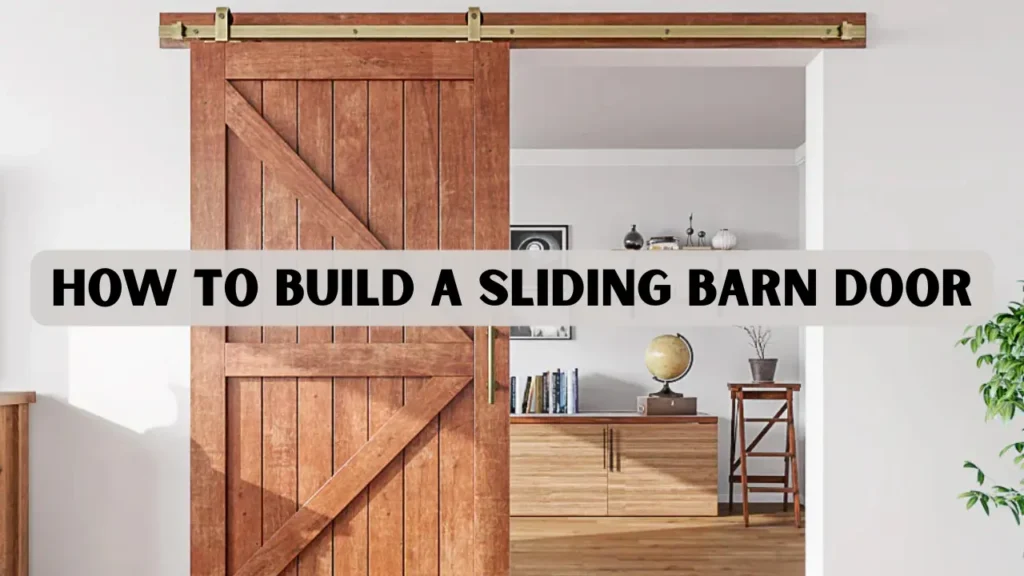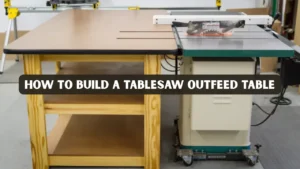Sliding barn doors have become a design trend that combines practicality with timeless charm. They save space, enhance room aesthetics, and can be customized to match any décor style. Whether you prefer a rustic farmhouse look or a modern clean finish, knowing how to build a sliding barn door allows you to create a unique centerpiece for your home.
This project not only adds functionality but also strengthens your woodworking skills in measuring, cutting, assembling, and finishing wood. The guide below covers every step in detail, from planning to final installation.
Key Takeaways
- Learn how to build a sliding barn door from start to finish using common woodworking tools.
- Understand measurements, materials, and track installation for smooth operation.
- Discover a real USA case study showcasing practical results from a first-time builder.
- Get long-term maintenance tips to keep your door functional and beautiful.
Why Build a Sliding Barn Door?
Building a sliding barn door is more than just a decorative upgrade. It is a practical and stylish home improvement project that saves space and adds character. Unlike traditional swing doors, sliding barn doors glide along a track, making them ideal for small areas or modern open-concept layouts.
Key reasons to build your own sliding barn door:
- Cost Savings: A DIY barn door costs significantly less than a pre-made version.
- Customization: You can choose your preferred wood, color, and hardware to match your interior.
- Easy Installation: The process is simple, even for beginners with basic tools.
- Visual Appeal: It brings a warm, rustic look that enhances your home’s design.
- Practicality: Perfect for closets, pantries, and tight spaces where swing doors are inconvenient.
Building your own sliding barn door also helps you learn basic woodworking skills while creating something unique and functional for your home.
Tools and Materials You’ll Need
Essential Tools
- Measuring tape and square
- Circular saw or table saw
- Drill with bits and screws
- Level and clamps
- Sandpaper or power sander
- Paintbrush or roller
Recommended Materials
- Solid wood planks such as pine, oak, or cedar
- Wood glue
- Sliding barn door hardware kit
- Stain or paint
- Clear sealant or polyurethane
- Door handle or pull
How to Build a Sliding Barn Door Step by Step Process
Step 1: Measure the Door Opening
Accurate measurement is the foundation of this project. Measure the doorway width and height, then add about two inches to the width and one inch to the height to ensure full coverage. Check that the walls are level before proceeding.
Write down your measurements carefully, as any miscalculation can affect how smoothly the door slides later.
Step 2: Cut the Wood Panels
Lay your wooden boards on a flat surface and mark them according to your final measurements. Cut the boards using a table or circular saw. Lightly sand all edges to remove roughness and splinters.
Pro Tip
Always clamp your boards before cutting to maintain precision. Slight unevenness can lead to gaps or misalignment when assembling the door.
Step 3: Assemble the Door Frame
Arrange the planks edge-to-edge on a flat surface. Apply wood glue between each joint and clamp tightly. Once the glue sets, secure horizontal top and bottom boards using screws.
To strengthen the structure and prevent warping, add a diagonal board across the frame in a “Z” or “X” pattern. This traditional barn door design combines strength with classic style.
Step 4: Sand the Surface
Smooth surfaces make the finish more professional. Start sanding with 80-grit paper to remove any unevenness, then move up to 220-grit for a fine finish. Always sand along the wood grain to avoid scratches.
Clean the dust with a dry cloth before applying any finish or paint.
Step 5: Apply Stain or Paint
Select a stain or paint that complements your room.
Staining Tips
- Stir the stain thoroughly before use.
- Apply with a cloth or brush following the grain.
- Wipe off excess to highlight natural patterns.
- Seal with a clear polyurethane coat after drying.
If you prefer painting, use a primer first for smooth color application.
Step 6: Attach the Sliding Hardware
The sliding system is the heart of your barn door. Mount the metal track above the doorway using wall anchors or screws. Attach the roller hangers to the top of the door, ensuring equal spacing.
Hang the door carefully on the track and test the movement. Adjust the brackets if needed for a smoother slide. Finish by securing the stoppers at both ends.
For reliable installation visuals and hardware advice, see The Family Handyman.
Step 7: Install Floor Guide and Handle
Install the floor guide at the base to prevent side movement. Make sure the door slides straight without rubbing against the wall.
Next, drill small pilot holes and attach the door handle. Choose a style that suits your design — matte black for industrial appeal or brass for a more traditional look.
Step 8: Test and Adjust
Slide the door open and closed multiple times. If you notice tightness or uneven motion, verify that the track is level. Tighten screws where necessary and lubricate the rollers with a silicone spray.
Proper adjustment ensures long-term performance and prevents wear on the track.
Step 9: Add Finishing Touches
Once the door is functioning correctly, you can enhance it with optional features such as:
- Soft-close attachments for quiet sliding
- Decorative trim or molding around the doorway
- Weatherstripping for insulation
These small upgrades elevate both the style and comfort of your final installation.
Maintenance and Care
Keep your door in top shape by performing simple maintenance every few months:
- Clean the track and rollers regularly
- Check for loose screws and tighten if necessary
- Wipe the door surface with a damp cloth
- Reapply protective finish annually to prevent moisture damage
Routine maintenance preserves both function and appearance for years.
Case Study: DIY Project from the USA
Common Mistakes to Avoid
- Skipping measurement checks: Leads to poor fit or uneven sliding.
- Using low-quality hardware: Causes noise and instability.
- Rushing through sanding: Produces uneven finishing.
- Ignoring sealing: Exposes wood to humidity damage.
- Improper wall anchoring: Can create safety hazards.
Avoiding these issues helps ensure a successful and lasting installation.
Safety Tips for Building
- Wear goggles, gloves, and ear protection during cutting.
- Work in a well-ventilated area when using finishes.
- Keep electrical tools away from moisture.
- Store sharp tools safely after use.
Safety precautions are vital to avoid injury and maintain control while working.
Why Building It Yourself Matters
Learning how to build a sliding barn door is more than just a home improvement project. It is an opportunity to understand woodworking fundamentals such as accurate cutting, fitting, and finishing. Creating something functional with your own hands builds confidence and develops craftsmanship.
Unlike ready-made doors, a self-built sliding barn door reflects your creativity and attention to detail. It also allows you to choose better-quality materials and a design that matches your personal style.
Conculsion
Building a sliding barn door is an engaging project that combines craftsmanship, creativity, and practical home improvement. By following the steps above, using quality materials, and maintaining precision at each stage, you can design a door that adds beauty and character to your home.
Whether you are a beginner or a seasoned hobbyist, mastering how to build a sliding barn door helps you appreciate woodworking at its finest. With practice and care, your handmade door can last for decades, serving as both a design statement and a personal achievement.
FAQs
1. What materials do I need to build a sliding barn door?
You’ll need wood boards (like pine or oak), screws, wood glue, a sliding door track kit, handles, and basic tools such as a drill, saw, and measuring tape.
2. How long does it take to build a sliding barn door?
Most DIY builders can complete the project in one to two weekends, depending on skill level and finishing details like sanding or staining.
3. Can I build a sliding barn door without power tools?
While possible with hand tools, using power tools such as a circular saw and drill ensures cleaner cuts and faster assembly.
4. What’s the best type of wood for a sliding barn door?
Hardwoods like oak and maple are ideal for durability, while softwoods like pine are lighter and easier for beginners to work with.
5. How do I ensure my barn door slides smoothly?
Install a high-quality track kit, ensure proper alignment, and occasionally lubricate the rollers to keep the door gliding easily.
6. Is a sliding barn door suitable for every room?
Yes, it can be used for bedrooms, bathrooms, pantries, and offices—just make sure you have enough wall space for the door to slide open.




